Top 10 Foods to Avoid with Braces for a Smooth Treatment
Top 10 Foods to Avoid with Braces for a Smooth Treatment
Wearing braces means making small changes to daily habits, especially when it comes to food. Some snacks and meals can damage wires or brackets, while others may slow down your progress. If you’re considering Invisalign Teen in Germany, you’ll still need to follow similar food precautions to keep your aligners clean and effective.
To keep your orthodontic treatment moving without problems, it’s important to avoid certain foods that can cause breakage or discomfort. This list covers the top 10 foods to avoid with braces and explains why they can interfere with your progress. Even those using Invisalign For Adults in Germany must be cautious, as sticky or hard foods can damage aligners or impact oral hygiene with braces.
1. Sticky Candy
Sticky candy pulls on your brackets and wires. As you chew, these sweets stretch and get caught between the metal parts of your braces. Families exploring Invisalign First in Germany for their children should know that sticky candies are just as risky for aligners as they are for traditional braces. They can also cling to your teeth and create a breeding ground for bacteria, which raises the risk of cavities.
Examples include:
- Caramel
- Taffy
- Chewy toffee
- Gummy bears
Even if you brush after eating them, these treats are hard to remove completely. One wrong bite can pop a bracket loose or bend a wire.
2. Hard Candies and Lollipops
Hard candies don’t just pose a risk when you bite into them. Keeping them in your mouth for a long time bathes your teeth in sugar, which encourages plaque buildup. If you try to bite down, you might break a bracket or crack a wire.
Avoid:
- Jawbreakers
- Lollipops
- Butterscotch discs
- Lifesavers
These might look harmless, but even one crunch can mean an extra visit to the orthodontist.
3. Popcorn
Popcorn seems like a light snack, but it hides small kernels that often get stuck between braces and gums. These kernels are hard and sharp. They can bend wires, loosen brackets, or cause gum inflammation.
Even when you think you’ve chewed carefully, unpopped kernels can sneak in and cause trouble. Some patients end up with sore spots or infections because of them. Flavored popcorns also carry added sugars and sticky coatings that cling to braces.
4. Nuts
Nuts are packed with protein and healthy fats, but their crunchy texture makes them risky for anyone wearing braces. One bite can apply too much pressure to the brackets, snapping them off or shifting your wires.
Common culprits include:
- Almonds
- Walnuts
- Pecans
- Pistachios
If you enjoy nut-based snacks, go for smooth nut butters instead. They give you the flavor without the crunch.
5. Chewing Gum
Chewing gum pulls at your wires and often sticks to brackets. Some patients think sugar-free gum is fine, but even those types can stretch across your hardware and pull on the metal.
Gum can also lead to jaw fatigue during treatment. Constant chewing can make your jaws sore, especially if you’re already dealing with tight wires or new adjustments.
6. Hard Bread and Bagels
Hard bread might seem like a safe carb, but its dense crust makes chewing difficult. Biting into bagels or crunchy rolls forces your front teeth to work harder, which can weaken brackets.
Examples to watch out for:
- Crusty baguettes
- Toasted bagels
- Pizza crusts
- Hard pretzels
If you want to enjoy bread, choose soft slices or tear your pieces into smaller bites before chewing with your back teeth.
7. Chips and Crunchy Snacks
Potato chips, tortilla chips, and similar snacks break into sharp pieces when you chew. These shards can wedge into your braces or poke your gums, causing soreness or bleeding.
Even “baked” chips aren’t a safer option. They still crack in a way that puts pressure on brackets. Some patients think they can eat them slowly or chew gently, but the risk of damage still exists.
Stick to soft alternatives like baked veggie slices or puffs if you’re craving something salty.
8. Raw Fruits and Vegetables
Healthy eating matters during treatment, but hard fruits and vegetables can be tough on your braces. Biting into a raw apple or carrot puts pressure on your brackets and may lead to damage.
Try these adjustments instead:
- Cut apples into thin slices
- Steam or roast carrots and broccoli
- Choose softer fruits like bananas, berries, or peeled pears
Cooked or blended versions keep your teeth safe and give your body the nutrients it needs.
9. Corn on the Cob
Corn on the cob seems harmless, but biting straight into it can loosen brackets or bend wires. It also pushes food deep between your teeth and braces, making it harder to clean.
You don’t need to skip corn altogether. Just cut the kernels off the cob before eating. That way, you get the taste and texture without the hassle.
10. Ice
Chewing on ice doesn’t offer any nutritional value and puts your braces at serious risk. Many people chew ice out of habit, especially after finishing a drink. But this frozen snack can snap wires or fracture brackets.
Even small cubes carry enough force to damage your braces. If you crave the crunch, try chilled cucumber slices or frozen grapes instead. They’re softer and gentler on your mouth.
Keep Your Treatment on Track
Food choices affect how smoothly your treatment goes. Avoiding the wrong items helps reduce extra trips to the orthodontist and lowers your risk of tooth decay or oral injury. Every time you eat, think about how it might affect your brackets and wires.
It’s not about giving up your favorites forever. It’s about swapping them for options that support your progress. Many patients find it easier to adjust when they remember their goal—a straighter, healthier smile that lasts.
Tips to Protect Your Braces While Eating
You don’t need to stick to boring or bland meals. Just keep these habits in mind:
Chew Slowly
Eating too fast increases your chances of biting down the wrong way. Slow, mindful chewing helps you feel if anything gets caught or pulls on your braces.
Cut Food into Small Pieces
Instead of biting directly into large items, slice them into smaller bits. This reduces pressure on your brackets and helps you avoid accidents.
Rinse After Eating
Swish with water after every meal. This helps remove food particles before they harden and stick to your braces. It also freshens your mouth and reduces the chance of buildup.
Avoid Sugary Snacks Between Meals
Constant snacking gives bacteria more time to feed on sugars. Stick to balanced meals and brush or rinse afterward to keep your mouth clean.
Conclusion
Braces do their job best when they stay in good shape. While it may feel like a long list of foods to skip, making these smart choices protects your investment and speeds up your progress. At Dillon Orthodontics, we’re here to support your journey every step of the way. Stay mindful about what you eat and focus on keeping your braces intact—contact us if you have any questions or need personalized advice.
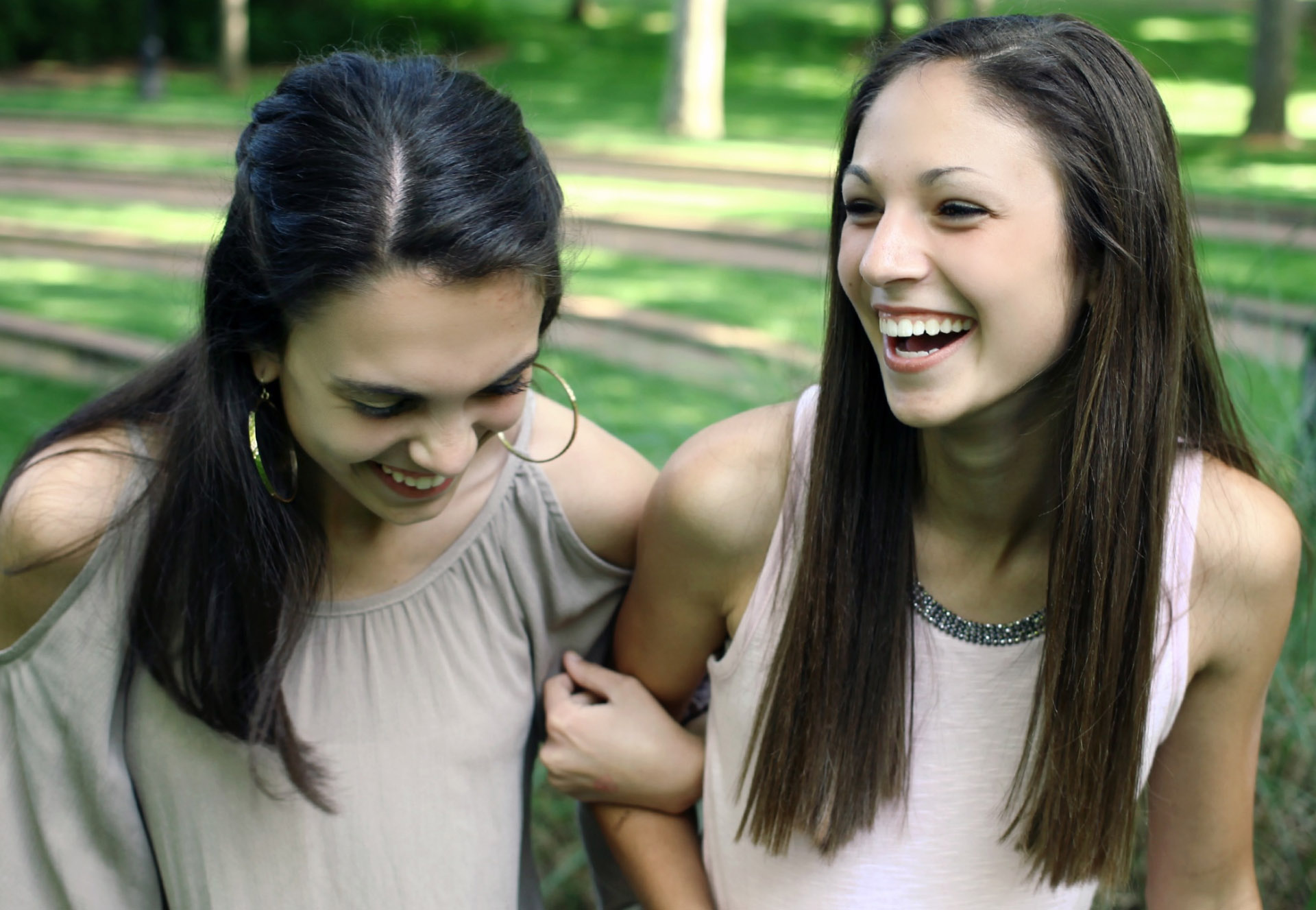

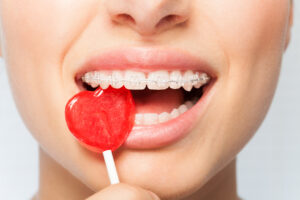
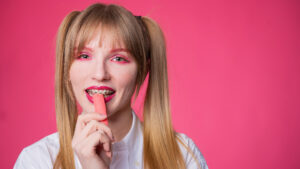
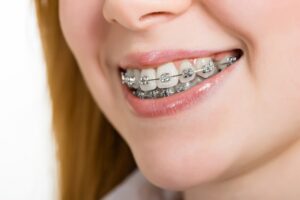
 Dillon Orthodontic Care
Dillon Orthodontic Care